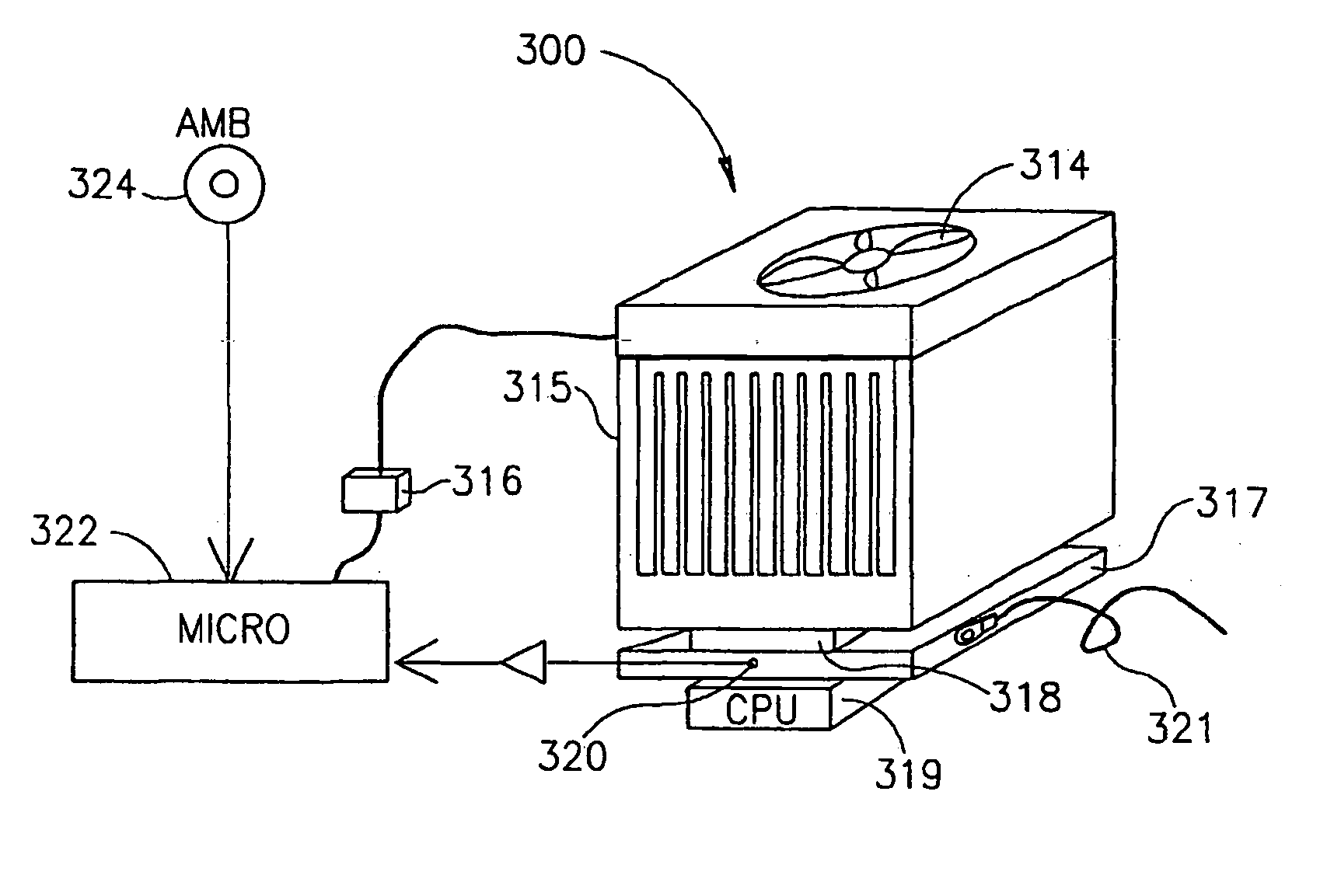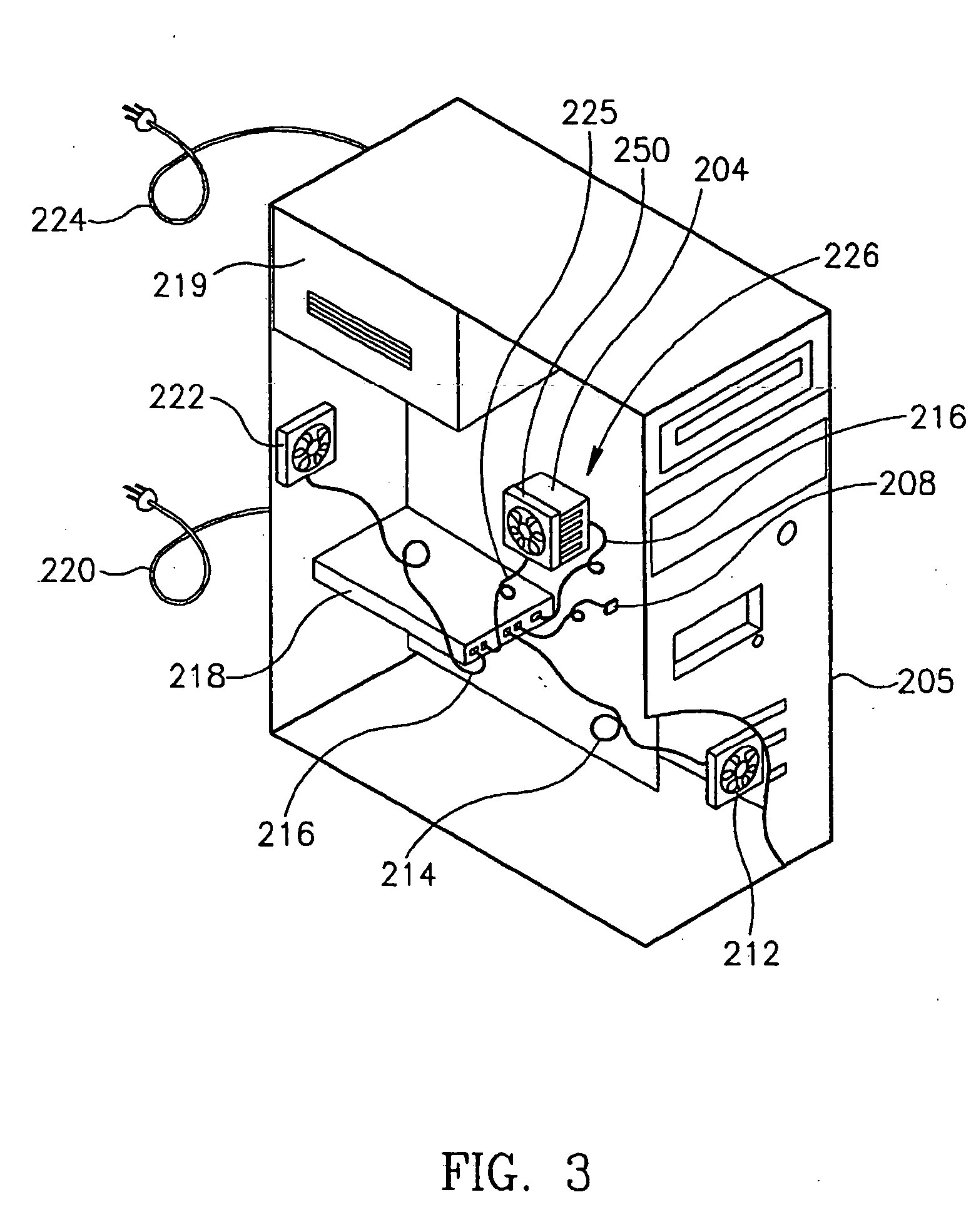Quiet cooling system for a computer
- Summary
- Abstract
- Description
- Claims
- Application Information
AI Technical Summary
Benefits of technology
Problems solved by technology
Method used
Image
Examples
example
[0123] By using an active cooling system of the present invention, having a fan operating at a voltage of 6V and a TEC, when the ambient temperature is 30° C., and there being a 20W load on the CPU, the case temperature can be maintained at 27° C., that is, 3° C. below ambient temperature. In contradistinction, the prior art, passive solution of a heat sink, and a similar 6V fan, results in the CPU case temperature stabilizing at 37° C., that is, 10° C. more than that achievable with active cooling. If a higher power TEC is used, even better results are obtainable.
[0124] Although the cooling system described herein is particularly appropriate for cooling a CPU, it may also be applied to cool other solid state components.
PUM
 Login to View More
Login to View More Abstract
Description
Claims
Application Information
 Login to View More
Login to View More - R&D
- Intellectual Property
- Life Sciences
- Materials
- Tech Scout
- Unparalleled Data Quality
- Higher Quality Content
- 60% Fewer Hallucinations
Browse by: Latest US Patents, China's latest patents, Technical Efficacy Thesaurus, Application Domain, Technology Topic, Popular Technical Reports.
© 2025 PatSnap. All rights reserved.Legal|Privacy policy|Modern Slavery Act Transparency Statement|Sitemap|About US| Contact US: help@patsnap.com



